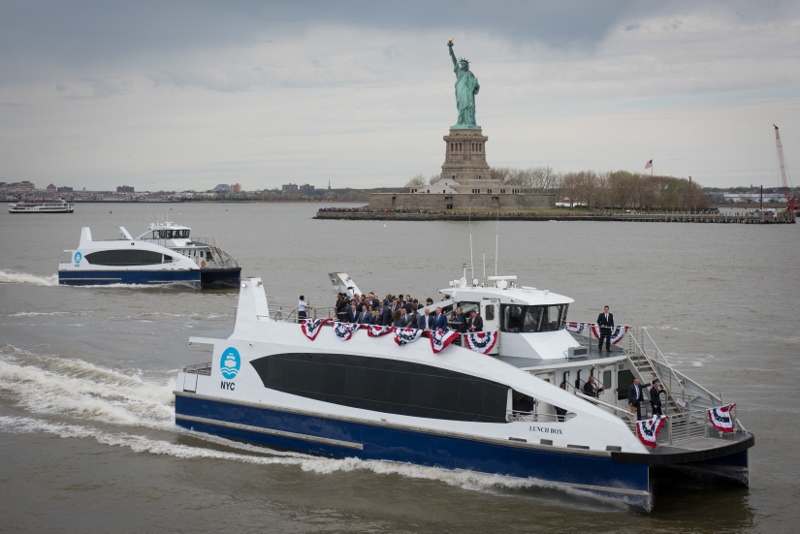While waterfront community groups celebrated the arrival of the first NYC Ferry vessels, thousands of commuters from the New Jersey side of the Hudson River dreaded their next day on the rails.
A deadly NJ Transit derailment last Sept. 29 in Hoboken, N.J., ushered in a season of bad news for the metro region’s aging, overcrowded and underfunded public transit infrastructure.
Another derailment April 3 at New York’s Penn Station was blamed on problems with Amtrak’s rails, and shut down eight of 21 tracks into the city. As Amtrak struggled with major repairs, train service was severely disrupted over four days.
The private NY Waterway ferry and bus company stepped in, offering to pick up stranded NJ Transit commuters at the thronged Hoboken station and carry them over the Hudson to the West 39th St. ferry terminal.
After starting up in about 24 hours, the impromptu service attracted 4,000 riders — potentially, permanent new customers, so enthusiastic that company president Arthur Imperatore decided to include Hoboken on NY Waterway’s regular routes later this year.
Meanwhile, train disruptions continue, and the region’s political leaders worry that the Trump administration will pull out federal aid for the Gateway project, the proposed replacement to the century-old rail tunnels that carry local commuter and Amtrak trains under the Hudson.
Without that federal commitment, the region’s economy could choke on mobility limits, advocates say.
“If we continue down this disastrous track, the nightmare our region’s commuters continue to endure will become our new reality,” said Sen. Cory Booker, D-N.J.
Before train tunnels and the subway, New York waters swarmed with passenger ferries. NYC Ferry harkens back to those days, although its backers’ hoped-for 4.6 million riders annually would be but a fraction of those 1.7 billion now on the rails.
More New Yorkers are hearing the call of the water. The longest NYC Ferry route between Manhattan and Rockaway is an hour one way, but still half the time of a torturous rail commute. This week the Trust for Governors Island announced the start of weekend service to the former harbor fortress, now a public park.
Three big new Staten Island ferries are on order from Eastern Shipbuilding, Panama City, Fla., but borough officials have been fighting for their own piece of the city's new high-speed ferry services.
Staten Islanders contend with up to two-hour commutes to Midtown jobs, and sometime next year there could be another option. On the same day Mayor Bill de Blasio rode the first NYC Ferry to Brooklyn, Staten Island Borough President James Oddo announced his own deal with NY Waterway: a 25-minute ferry hop to Midtown starting in 2018.
All this investment is good for something else too: the day when ferries are called to the rescue in New York’s next emergency. In her recent column for the online urban magazine Untapped Cities, independent planner and waterfront expert Inna Guzenfeld reflected on the revival of water transit and how crucial it has become to emergency response, since the epic evacuation of lower Manhattan on 9/11.
“Extending new routes boost transit redundancy by giving New Yorkers more ways to travel between boroughs. Building more ferry landings creates citywide docking points for waterborne response and recovery,” Guzenfeld writes. “As the first comprehensively planned ferry system in New York history, NYC Ferry Operated by Hornblower will keep the city moving when New Yorkers need it the most.”





